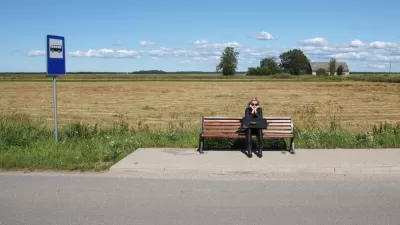Changing demographics and preferences in eldercare have millions planning to age in place, this will have big implications for our communities and our policy makers.

A new report from the Harvard Joint Center for Housing Studies shows the changing state of America's aging community, both in terms of demographics and where people intend to age. "By 2035, one in three U.S. households, versus today’s one in five, will be headed by someone 65 or older," according to reporting from Mimi Kirk in CityLab. To add to that demographic reality, "By 2035, the number of households with a person with a disability will reach more than 31 million—an increase of 76 percent over current numbers," Kirk writes. But, while it may be easy to make these plans, it's harder to execute them: "… only 1 percent of housing stock is currently equipped with no-step entrances, single-floor living, wide halls and doorways to allow a wheelchair, electrical controls reachable from a wheelchair, and lever-style handles on faucets and doors," Kirk writes.
The lead author of the report, Jennifer Molinsky says issues don't stop at outfitting the home for possible impairment, “Even though many people express a desire to age in place, doing so can be isolating without ways to connect with the surrounding community,” Molinsky says. This is a tricky issue, but Molinsky says living in walkable areas may help dispel the isolation. "Constructing new housing in more central areas, such as in downtown suburban centers, could also help with isolation," Molinsky told Kirk.
FULL STORY: Can America’s Aging Stay in Their Homes?

Alabama: Trump Terminates Settlements for Black Communities Harmed By Raw Sewage
Trump deemed the landmark civil rights agreement “illegal DEI and environmental justice policy.”

Study: Maui’s Plan to Convert Vacation Rentals to Long-Term Housing Could Cause Nearly $1 Billion Economic Loss
The plan would reduce visitor accommodation by 25% resulting in 1,900 jobs lost.

Planetizen Federal Action Tracker
A weekly monitor of how Trump’s orders and actions are impacting planners and planning in America.

Wind Energy on the Rise Despite Federal Policy Reversal
The Trump administration is revoking federal support for renewable energy, but demand for new projects continues unabated.

Passengers Flock to Caltrain After Electrification
The new electric trains are running faster and more reliably, leading to strong ridership growth on the Bay Area rail system.

Texas Churches Rally Behind ‘Yes in God’s Back Yard’ Legislation
Religious leaders want the state to reduce zoning regulations to streamline leasing church-owned land to housing developers.
Urban Design for Planners 1: Software Tools
This six-course series explores essential urban design concepts using open source software and equips planners with the tools they need to participate fully in the urban design process.
Planning for Universal Design
Learn the tools for implementing Universal Design in planning regulations.
Caltrans
Smith Gee Studio
Institute for Housing and Urban Development Studies (IHS)
City of Grandview
Harvard GSD Executive Education
Toledo-Lucas County Plan Commissions
Salt Lake City
NYU Wagner Graduate School of Public Service




























